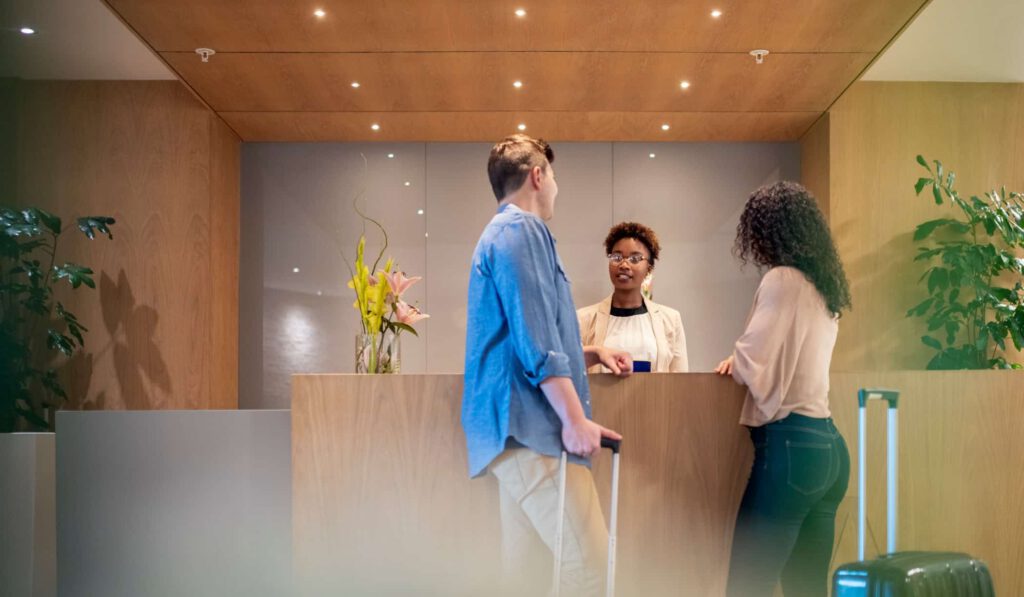The Public Switched Telephone Network (PSTN), a network of thousands of miles of copper wire, has served us well for nearly a century and a half. Most of this infrastructure still crisscrosses the country, carrying phone signals (and, in some cases, DSL internet) to thousands.
But the PSTN is aging, and many hotels are shifting towards modern and flexible SIP Trunking technology, which offers increased flexibility, efficiency, and costs savings. Many hotels have phased out their analog systems, in favor of SIP trunking and VoIP communications systems.
If you’re considering upgrading your communications system from the PSTN to SIP Trunks, here’s what to expect.
What is SIP Trunking?
Under the previous analog system, a “trunk” was a copper wire that connected a phone to the network — each trunk had its own phone number associated with it. SIP trunking, which stands for “Session Initiation Protocol” trunking, replaces the copper wire with a virtual trunk to provide service. This allows the ability to connect your communications systems to your VoIP/PBX system.
The Benefits of SIP Trunking
Key benefits of SIP trunking include:
- Lower monthly fees: most VOIP systems charge nothing at all for calls placed within a building, and long-distance calls (important for hotels with a lot of international customers) are far more affordable than the equivalent call over PSTN.
- Better service to your guests: since you can generate virtual numbers tied to any location in the world, you can provide your guests with “local” numbers that save them on long-distance calling.
- Flexibility: since your phone number isn’t tied to a physical location, you can take any number with you when you’re moving around the hotel or answering the phone from another site.
- Adding and removing numbers: you can easily add new phone numbers as needed, remove numbers you’re not using, or transfer numbers from one location to another with no infrastructure upgrades at all.
Other Considerations
The success of a VoIP system is dependent on the quality and reliability of your internet connection. You’ll need to ensure you have enough bandwidth to handle your call traffic in addition to your expected web traffic.
The good news is that an upgrade to a VoIP system doesn’t require much additional bandwidth. A hotel with 250 phone lines only needs to dedicate around 15 megabytes per second to their phone lines — about the same as three computers running Netflix simultaneously. If your hotel is already serving high-speed internet to your guests, the additional bandwidth needs of a VoIP network should be scarcely noticeable.
Talk to Phonesuite Today
If you’re considering an upgrade to a modern phone system, talk to Phonesuite today. Our phone systems are built for hotels from the ground up, and we’ve installed them in more than 6,500 hotels in the last 30 years. We’ll examine your hotel’s existing systems, needs, and priorities to design a system that adds functionality and saves you money. Curious about the cost? Talk to Phonesuite today!



